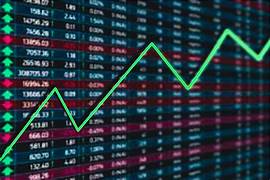Volatility in Finance: What It Means and How It Applies to Stocks
Understanding Volatility
Volatility refers to the degree of variation in the returns of a security or market index. It’s a statistical measure commonly calculated using either standard deviation or variance. Generally, greater volatility signals higher risk, as prices can experience sharp increases or drops quickly.
Volatility typically reflects significant price fluctuations in financial markets. For example, the market is considered volatile when stock prices fluctuate by more than 1% in either direction over an extended period. This characteristic is essential in pricing options contracts.
What is volatility in the stock market?
Volatility refers to the incidence and consequences of price fluctuations in the stock market. The more frequent the price shifts, the more volatile the market is.
Reviewing Current Volatility in the Market
The Cboe Volatility Index (VIX) uncovers market instability. It determines shareholder risk by calculating the indirect volatility (IV) in the estimates of a basket of put and call choices on the S&P 500 Index. A high VIX reading indicates areas of higher stock market volatility, while low readings signify periods of minimal volatility. The S&P 500 typically drops when the VIX rises, which naturally signals a good time to buy stocks.
What Volatility Tells Us
At its core, volatility highlights the uncertainty or potential risk in a security’s price movement. High volatility means that prices may fluctuate rapidly, while low volatility indicates more stable prices.
Volatility can be measured in various ways, with one standard method involving the analysis of an asset’s daily return percentages. Based on past price data, historical volatility represents the degree to which an asset’s returns have varied. Usually expressed as a percentage, this measure lacks a unit and can be calculated for various periods, including daily, weekly, monthly, or annual. A standard method is to view it as
Calculating Volatility
To calculate volatility, you use standard deviation, which itself is derived from variance. Here’s the basic formula:
Volatility = σ√T
Where:
• σ is the standard deviation of returns
• T is the number of periods considered
Example: Calculating Volatility from Stock Prices
Suppose you have monthly closing stock prices ranging from $1 to $10. Here’s how to determine the variance and then the standard deviation:
1. Find the mean (average):
2. Add all prices and divide by the number of values:
3. (1 + 2 + … + 10) = 55 ÷ 10 = $5.50
4. Calculate deviations from the mean:
5. Subtract the mean from each value:
6. (e.g., $10 – $5.50 = $4.50, $9 – $5.50 = $3.50, etc.)
7. Square each deviation:
8. This removes any negative signs and emphasizes larger de9. Sum the squared deviations:
10. The total in this example is 82.5
11. Find the variance:
12. Divide the sum by the number of values:
13. 82.5 ÷ 10 = $8.25
14. Calculate standard deviation:
15. Take the square root of the variance: √8.25 ≈ $2.87
This standard deviation reflects how far prices, on average, are from the mean. It gives investors a sense of potential risk or unpredictability in price movements.
viations.


